Affiliate links on Android Authority may earn us a commission. Learn more.
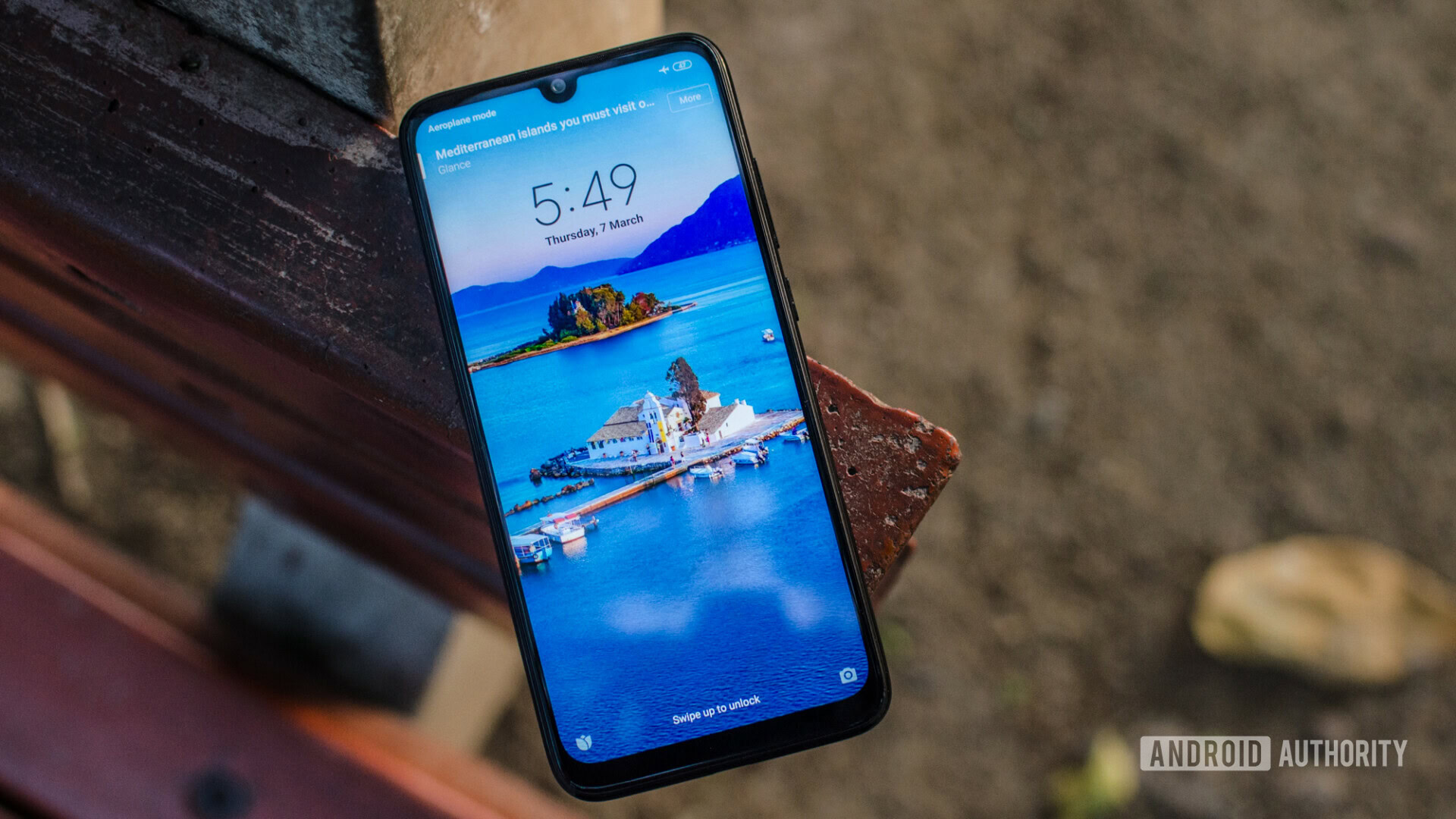
Redmi Note 7 Pro review: Gleaming hardware, unpolished software
Published onMarch 12, 2019
Xiaomi Redmi Note 7 Pro
What we like
What we don't like
Xiaomi Redmi Note 7 Pro
Xiaomi’s Redmi Note series has long been the most successful lineup for the company. Over the years, the series has struck a good balance between performance and price. So it doesn’t come as a surprise that the Redmi Note 7 Pro has a lot of hype surrounding it. The phone promises a high-spec processor and a top-shelf camera at an extremely enticing price.
Can the paper specs match up with the real world usage experience? We spent a week with the phone to find that out. Here’s our Redmi Note 7 Pro review!
About this Redmi Note 7 Pro review
I worked on this Redmi Note 7 Pro review over the course of a week. My Note 7 Pro review unit with MIUI 10 Global 9.2.25 Beta was used in India on the Airtel network. The unit was running February 1st, 2019 security patch and software version 9 PKKQ1.181203.001.
Design
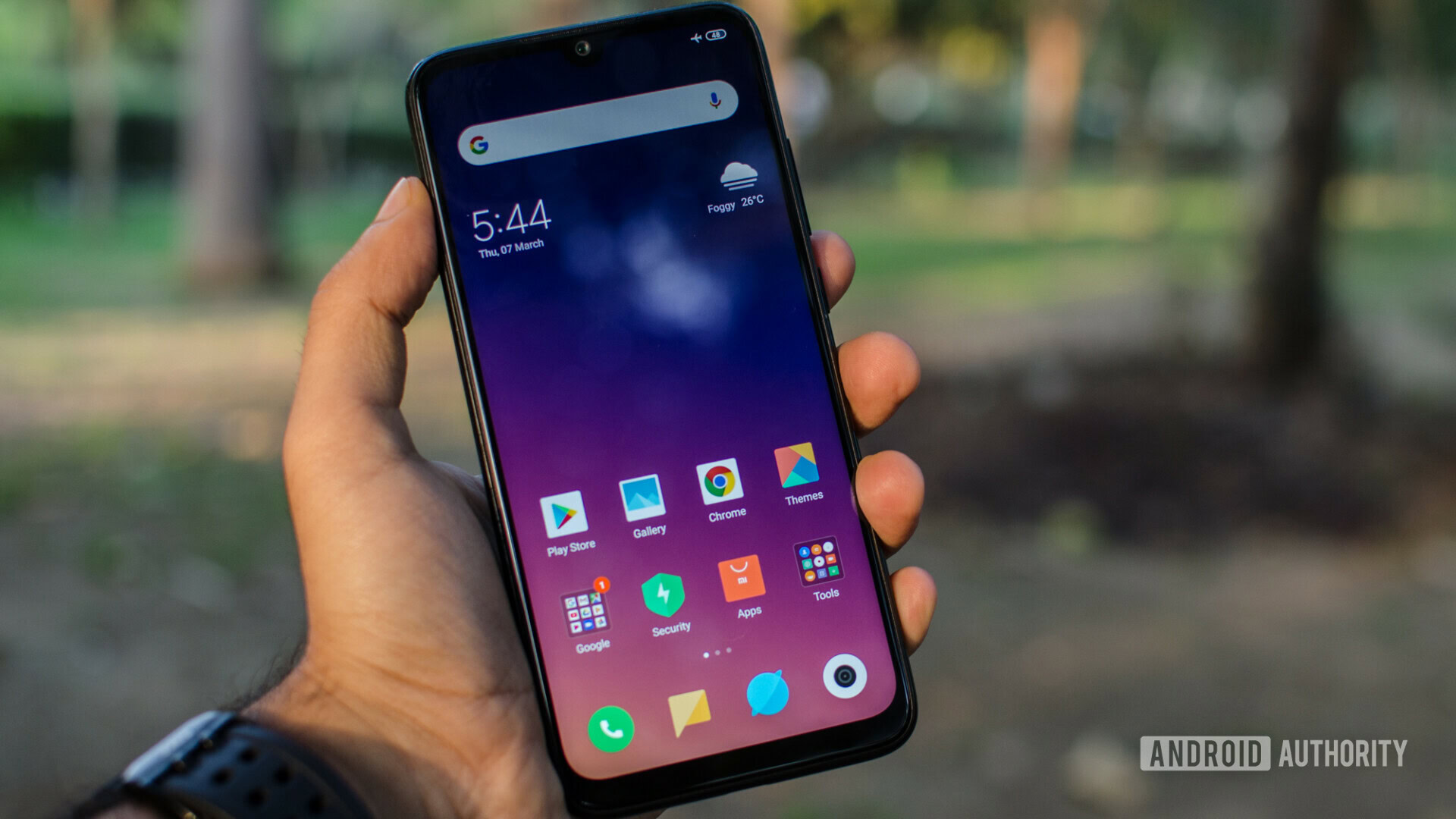
It has finally happened. Xiaomi has tossed out that long-in-the-tooth, glass-and-metal build of the Redmi Note series and brought in a bit of pizzazz. The Redmi Note 7 Pro is made entirely of glass and uses Gorilla Glass 5 both on the front and the back. The company sent us over the extremely understated black variant to test out. The phone looks very elegant, but it’s the gradient-heavy Nebula Red and Neptune Blue colors that look downright stunning.
This time around, the Redmi Note 7 Pro has gained a bit of thickness because of the use of glass. In my week with the phone, I accidentally dropped it once and the phone came out looking just as new. Other than a few micro scratches, the glass is still looking pristine, but Xiaomi is playing it safe and is bundling a case with the phone.
With a P2i coating and rubber gaskets, the Redmi Note 7 Pro should survive a splash or two.
Overall resilience appears to be a big factor on the Redmi Note 7 Pro. The phone has gained a P2i water resistance coating all the way through on the inside. All the relevant ports and buttons are secured internally using rubber gaskets. Xiaomi still doesn’t want to claim full=fledged water resistance, but the phone should survive the odd splash or light shower.
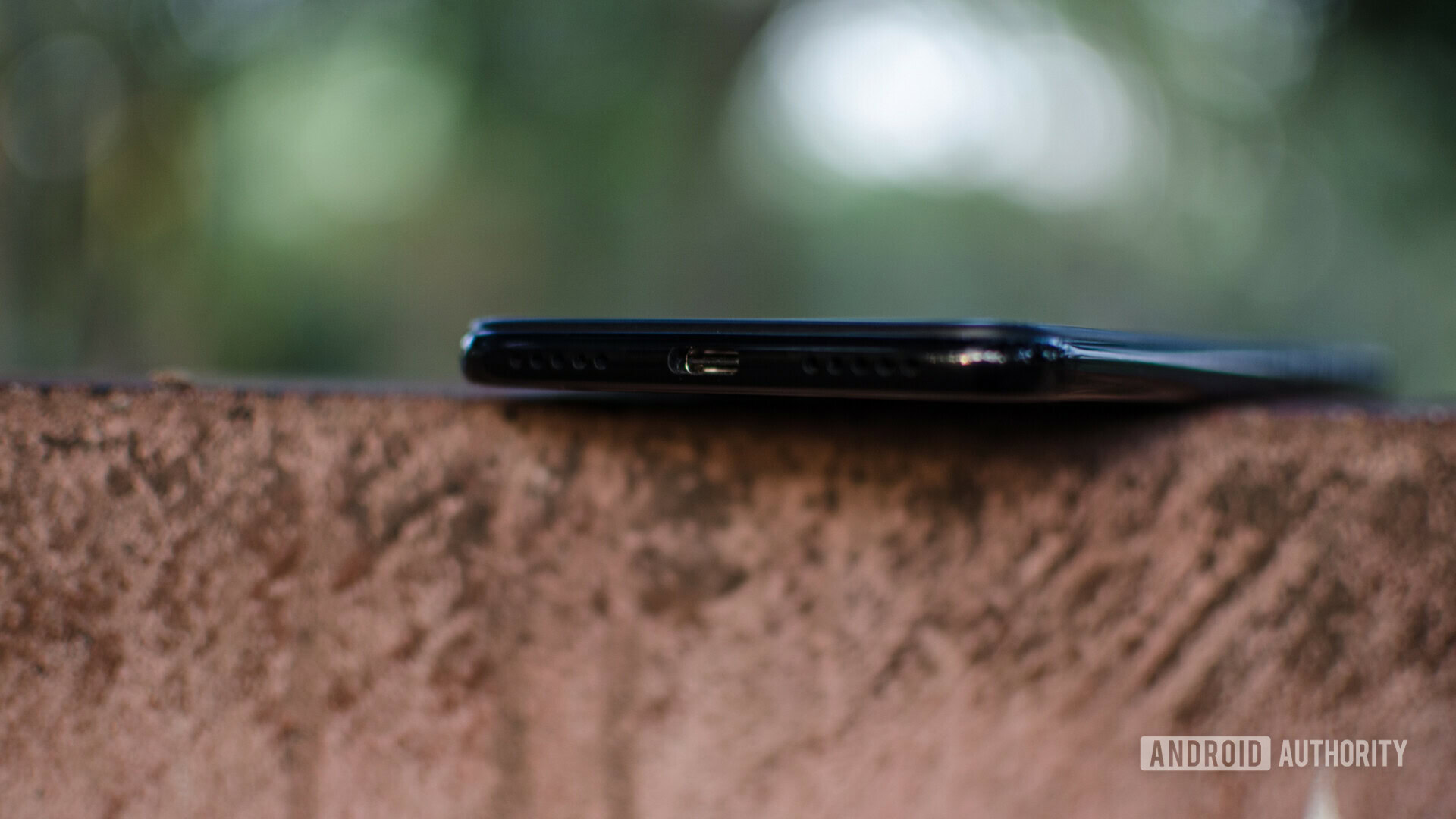
There are other changes too. It took Xiaomi long enough but the Redmi Note 7 Pro finally gains a USB Type-C port. The right side has the volume rocker and power button. Both keys are sufficiently clicky and exhibit a good amount of travel that feels very reassuring. The Redmi Note 7 Pro does not have stereo speakers and output from the bottom firing speaker is just about satisfactory. While sound does not distort even at high volumes, my main gripe is it just doesn’t get all that loud.
The left side of the phone has the SIM and microSD card slot tray, which is, unfortunately, of the hybrid SIM variety. At the top, next to the headphone jack, lies the infrared blaster, a crucial part of Xiaomi’s Redmi series, which works in conjunction with a pre-installed app.
The phone employs a waterdrop-style notch in the middle that isn’t particularly attractive to look at. Xiaomi calls it a “dot notch” and it juts out from the top of the panel in an almost jarring fashion. That said, it does get the job done by facilitating an 81.4% screen-to-body ratio. Bezels at the top and sides are slim enough, but there is a significant chin at the bottom. This lower chin is where you’ll also find the notification LED.
Overall ergonomics are as good as you would expect and the phone generally feels very premium. The Redmi Note 7 Pro weighs about 186 grams, which is definitely on the heavier side, but its balanced weight distribution helps. The rear fingerprint scanner is also easy to reach. It would be safe to say that Xiaomi has done a really good job with the Redmi Note 7 Pro’s overall design.
Display
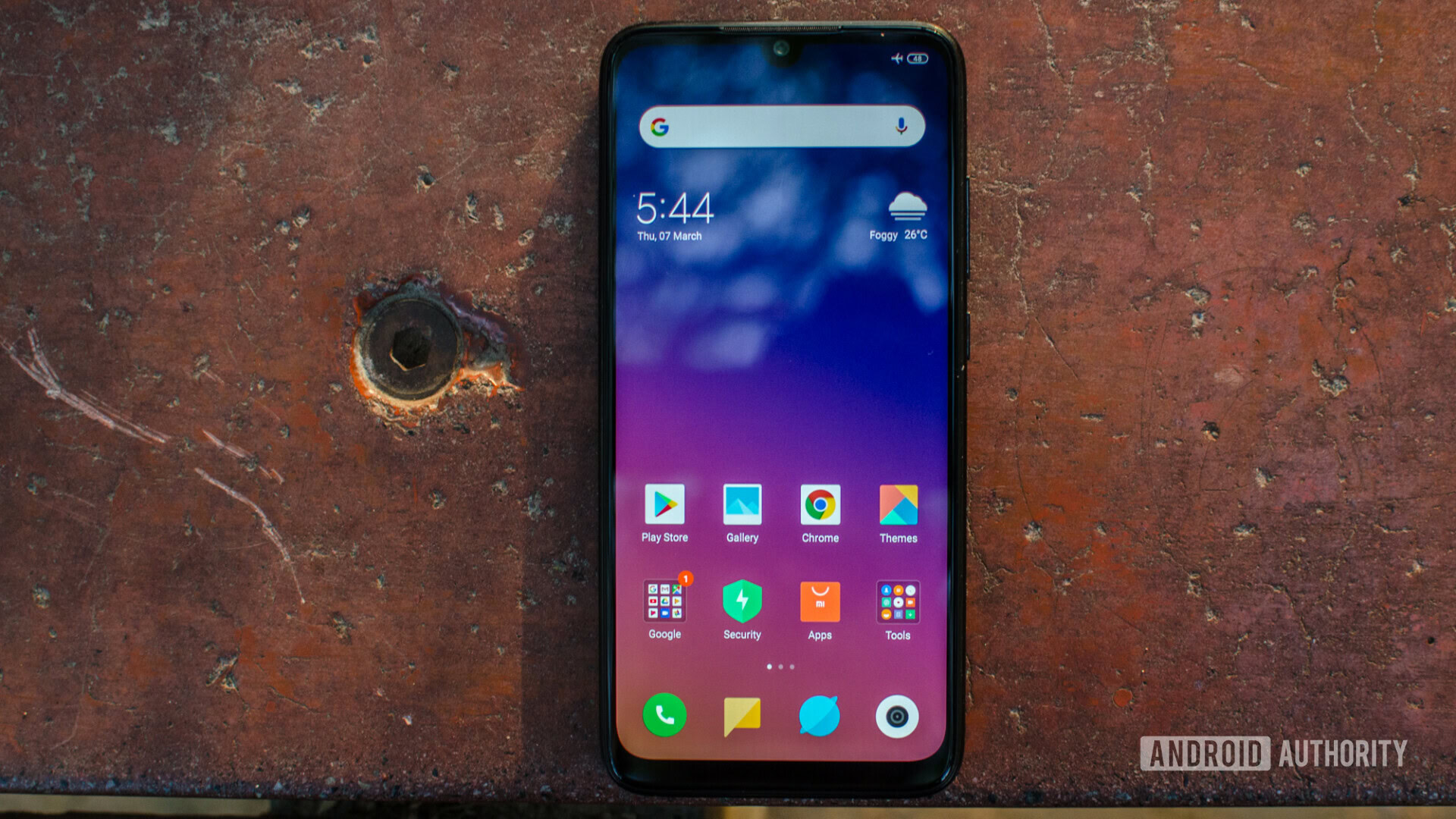
The screen on the Redmi Note 7 Pro is a 6.3-inch Full HD+ panel with a 19.5:9 aspect ratio. The panel is of the IPS LCD variety and it generally looks very good. The phone has support for Widevine L1 DRM so, theoretically, you should not face any issues with watching HD content on Netflix.
The default white point is accurate and colors look pleasing and comfortable, but you can make the display warmer or cooler if you wish.
The extremely glossy body can make it hard to read content when outdoors, but at maximum brightness the experience is satisfactory.
There is an option to hide the notch if that’s what you prefer, but since this is an LCD display, the software layer shows up in a deep grey tone that is visible at higher brightness levels.
Hardware
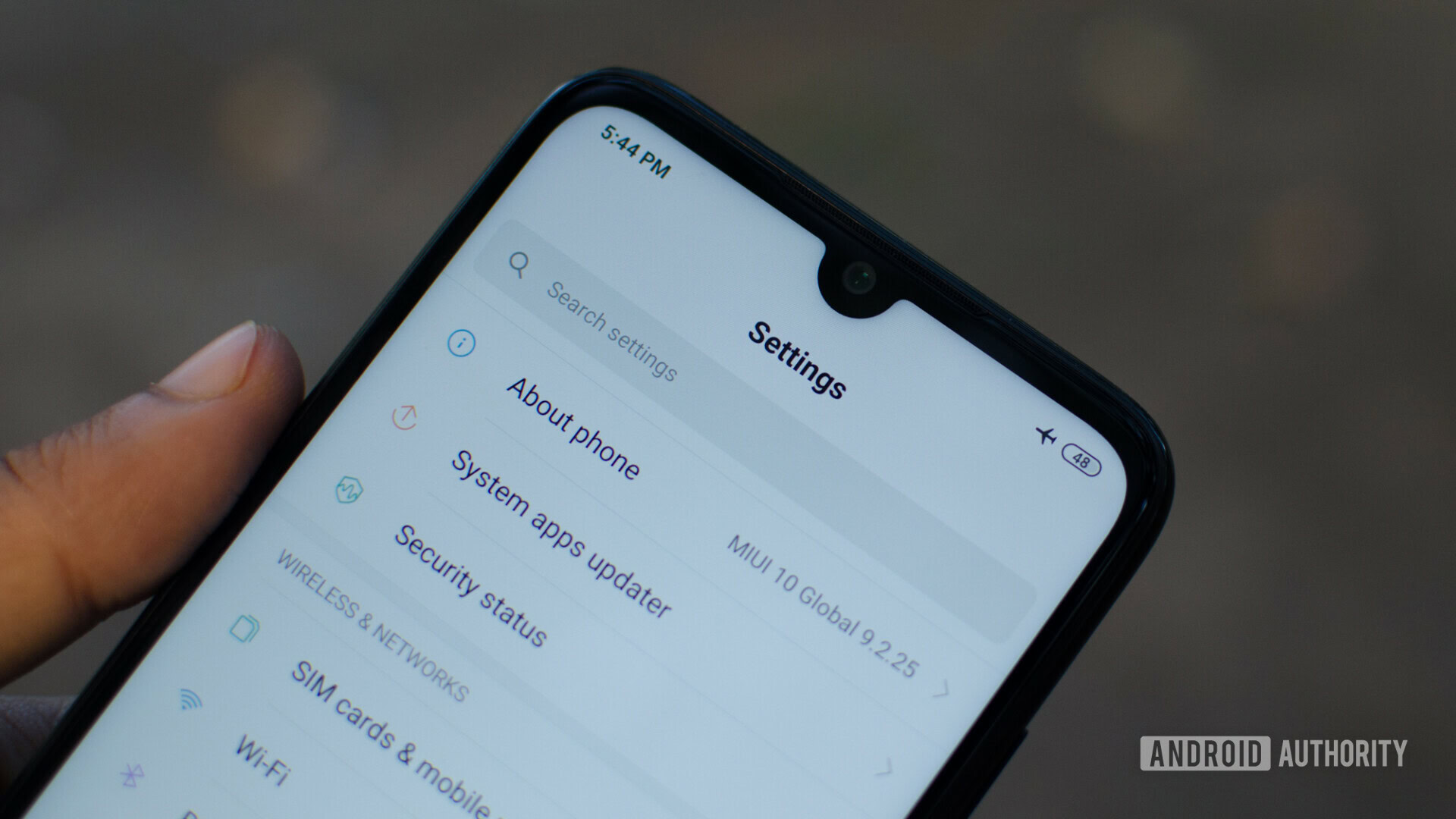
Powering the Redmi Note 7 Pro is a Snapdragon 675 chipset paired with 4GB or 6GB of RAM. The octa-core processor uses a combination of six high-efficiency cores based on the Cortex A55 architecture and two performance cores which are built on the Cortex A76 platform. The latter two ensure that CPU performance is not that far off from the Snapdragon 835, a flagship chipset from just two years ago. The Adreno 612 GPU is where the chipset lags behind the Snapdragon 710 as far as graphics performance is concerned.
Storage options are 64GB and 128GB and you can expand it via the microSD card slot. As mentioned earlier, the slot is of the hybrid variety so you should be prepared to lose the second SIM card in case you decide to add extra storage. You can expect to find about 51GB of free space on the 64GB version of the phone.
The Redmi Note 7 Pro has a 4,000mAh battery powering the show. Between the 11nm Snapdragon 675 chipset and MIUI’s battery optimizations, the phone lasts a full day and then some. Battery life will obviously vary depending on use case. Between ample social media use, WhatsApp, and about an hour of phone calls, the battery would easily last me a full day with over 50 percent left over. Over the course of a week of use, I observed an average of six hours of screen on time.
The Redmi Note 7 Pro delivers a consistent 6 hours of screen on time.
Unlike the vivo V15 Pro, the phone doesn’t drain too much of power while gaming. A half an hour session of PUBG depleted about ten percent charge.
The Redmi Note 7 Pro ships with support for Quick Charge 4.0 but Xiaomi hasn’t bundled in a compatible charger in the box. In our chat with Xiaomi, we were told this was a cost-saving measure. Using the standard charger, it took approximately two hours and ten minutes to top off the phone from under five percent charge.
Network performance was sufficiently solid and the phone was able to hold on to the signal even in poor network areas. Phone calls sounded clear and crisp at both ends.
Unfortunately, the Redmi Note 7 Pro does not support NFC.
Performance
I found the Snapdragon 675 chipset impressive when I first tested it out on the vivo V15 Pro. Cut to the Redmi Note 7 Pro and we’re talking about a phone that is half the price and yet has enough grunt underneath to run practically anything you might want to do on the hardware. At least on paper, the hardware is the real deal. Unfortunately, performance didn’t match up entirely and I’m inclined to believe this is down to Xiaomi’s software optimization — or lack of thereof.
The powerful hardware feels constrained by lack of software optimization.
There were moments when popping into the home screen took a full second and there were occasional frame drops in the animations for popping open folders. The Camera app locked up on me more than once, and on one occasion, a hard reboot was needed to get the phone running again.
Set to high, PUBG Mobile ran at a solid clip, until it didn’t. Between the software lock-up and moments when the game would slow down to a slide show, it really feels like Xiaomi needs to spend a bit more time refining the software on the Redmi Note 7 Pro.
Below are the Redmi Note 7 Pro benchmark scores for AnTuTu and 3DMark.
Software
I don’t really mind MIUI. I can even understand Xiaomi’s justification for carefully placed ads. What I don’t like is the ham-handed approach to ads that is starting to become detrimental to the user experience.
From content being displayed on the lock screen, to advertisements that are displayed when you install an application from the Play Store. You are presented ads even when you view your own videos in the gallery apps. Yes, there are ways to disable these deep down in the Settings, but the fact of the matter remains that the average person buying the phone is not going to figure this out.
Built on top of Android Pie, the Redmi Note 7 Pro runs on MIUI 10. Xiaomi’s take on Android has seen a lot of general enhancements over the generations and there are enough customization options to please most users.
There’s no app drawer to speak of, and all apps are placed directly on the home screen. I’m still a bit conflicted about the multitasking menu on the Redmi Note 7 Pro. All apps are displayed as cards and Xiaomi has added a few unnecessary shortcuts for a security scan, cleaner and more at the top.
Overall, MIUI is still a very feature-rich take on Android but I’m not entirely sold on how intrusive Xiaomi’s services are starting to get. The global version of the phone, when it rolls out, will likely not have any of these ads, but as it stands, the software is perhaps the weakest link here.
Camera
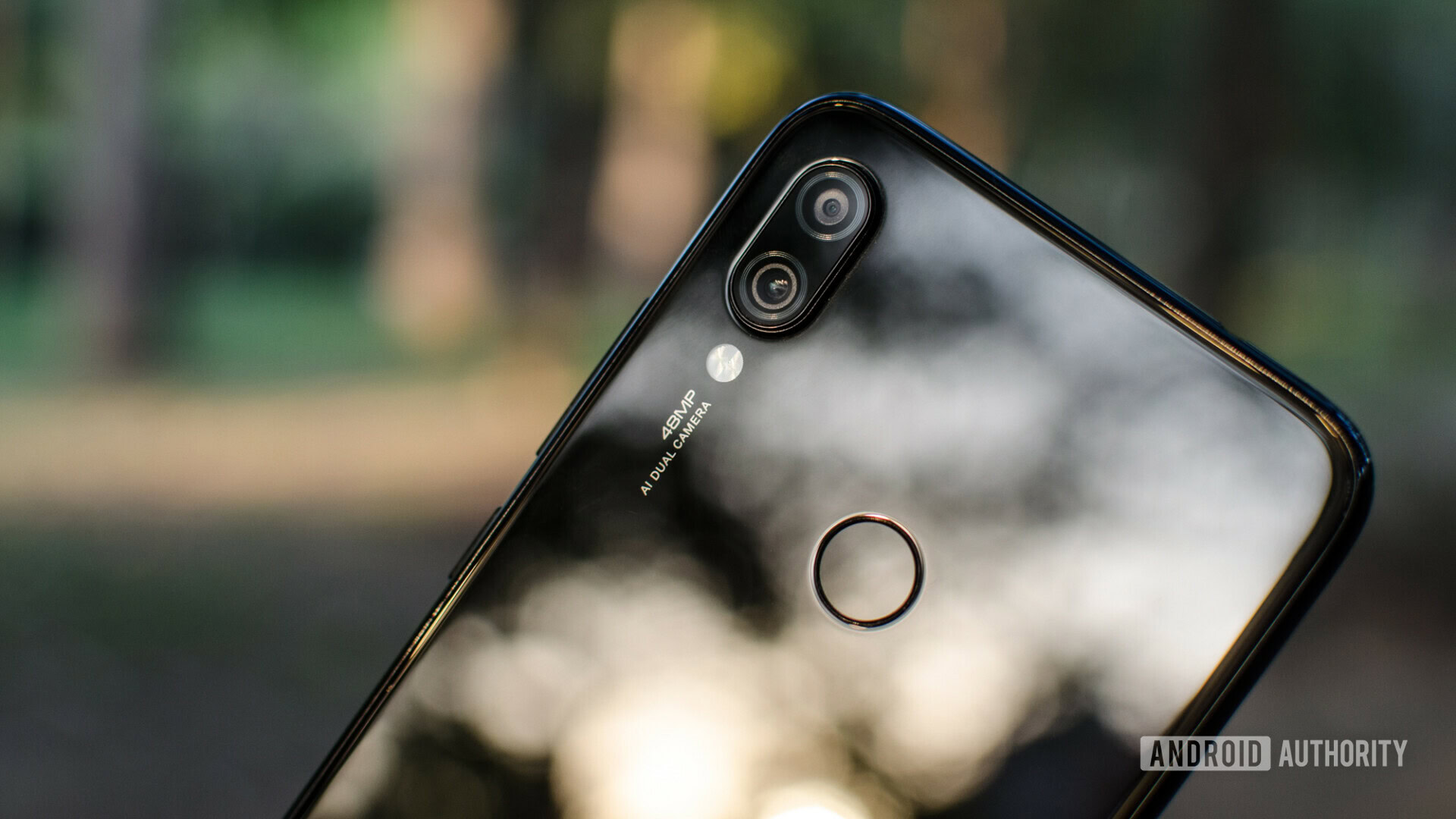
Alongside the fresh new design, a renewed focus on photography is the biggest change with the Redmi Note 7 Pro. The phone sports a 48-megapixel Sony IMX568 sensor in the primary camera and this is paired with a secondary 5MP camera for depth sensing.
The camera performs best in the 12MP pixel-binned mode.
Before we do a deep dive on the camera capabilities of the phone, it would be prudent to discuss why the phone has such a high-resolution sensor. While Xiaomi does offer a full-fledged 48MP mode in the camera interface, this is not something most people will need to — or, for the matter, should — bother with in regular use.
The idea here is to enhance camera sensitivity and dynamic range by using pixel binning. Four adjoining pixels are combined and fused together to create a much cleaner 12MP image. The benefits are most visible in low-light conditions but even in daylight, the benefits are quite apparent.
In a straightforward outdoor shot, the default camera slightly overexposed the image and burnt out highlights on the statue. The AI mode managed to correct for this and you can even notice a bit more contrast in the overall image. At the back, the bricks have a deeper shade and there are some signs of boosted saturation. The full-size image, on the other hand, exhibited image quality that was no better than the other two images and showed significant digital noise reduction patterns on close examination.
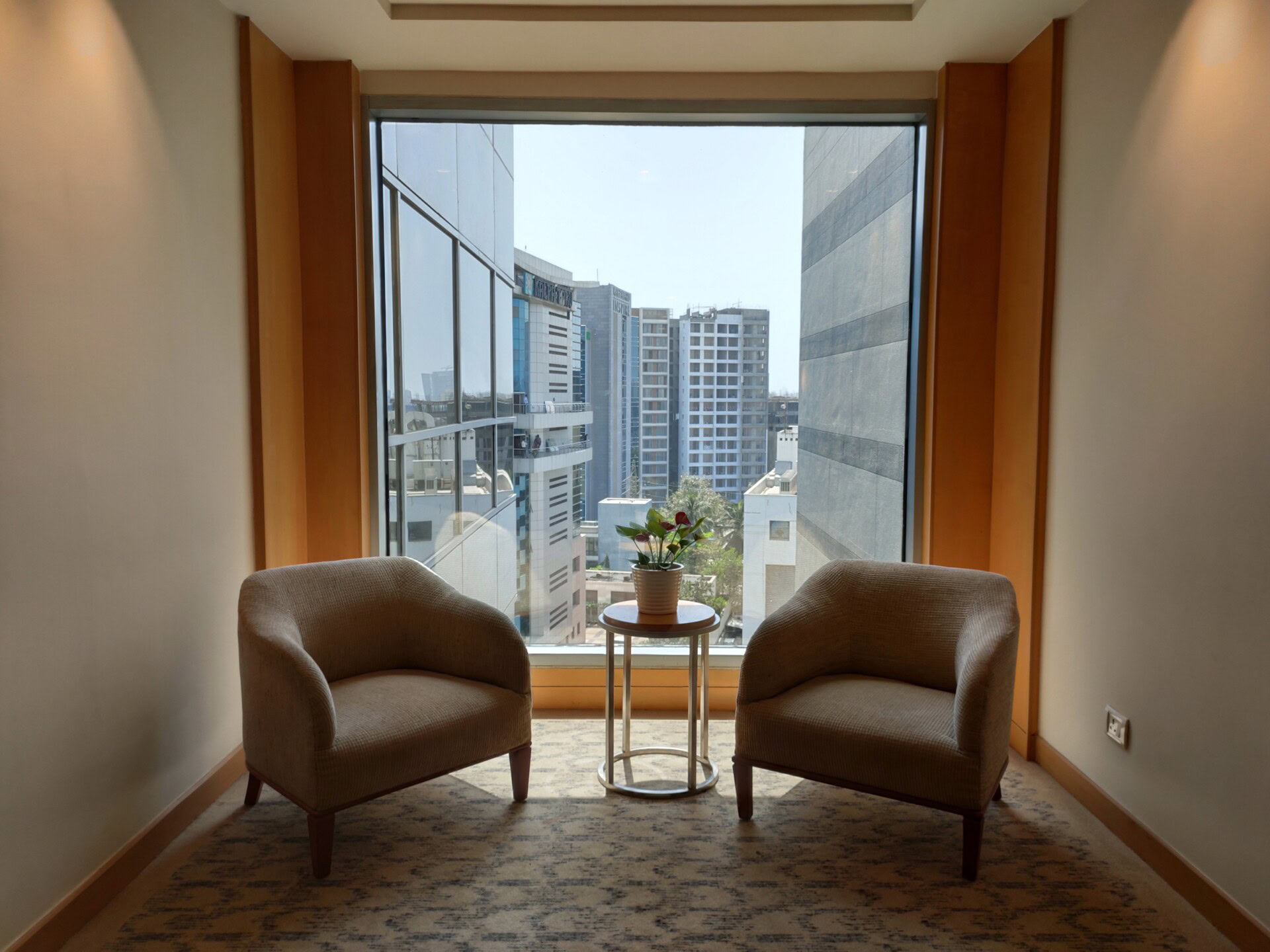
Generally speaking, the camera on the Redmi Note 7 Pro showcased great dynamic range. In the above image, you can see how the camera has managed to properly expose the objects indoors despite the bright sun outdoors. I definitely did not expect the Redmi Note 7 Pro to manage this as well as it did.
If you are the kind of person who shares a lot of images on social media, the AI mode will be right up your alley. The mode turns up the saturation just a little bit and adds a slight amount of sharpening to the image, making it look perfect for Instagram, straight out of the box.
The dedicated night mode on the Redmi Note 7 Pro does a really good job. I tested it across a restaurant as well as a mall at night. In the former, you can see how the mode has not only brought out more details in the shadow region, it has also managed to turn down the highlights and retain more information near the window. Yes, there is a lot of sharpening and close inspection will reveal a lot of flaws, but if you don’t blow up your images on a big screen, this isn’t something you need to worry about.
Shot inside a mall at night, the Night Mode delivers a more realistic looking image but adds a lot of watercolor-like noise reduction artifacts that are noticeable on pixel peeping. For what it’s worth, the low-light shots are rather good and I can handily recommend it as long as you don’t plan on cropping in much.
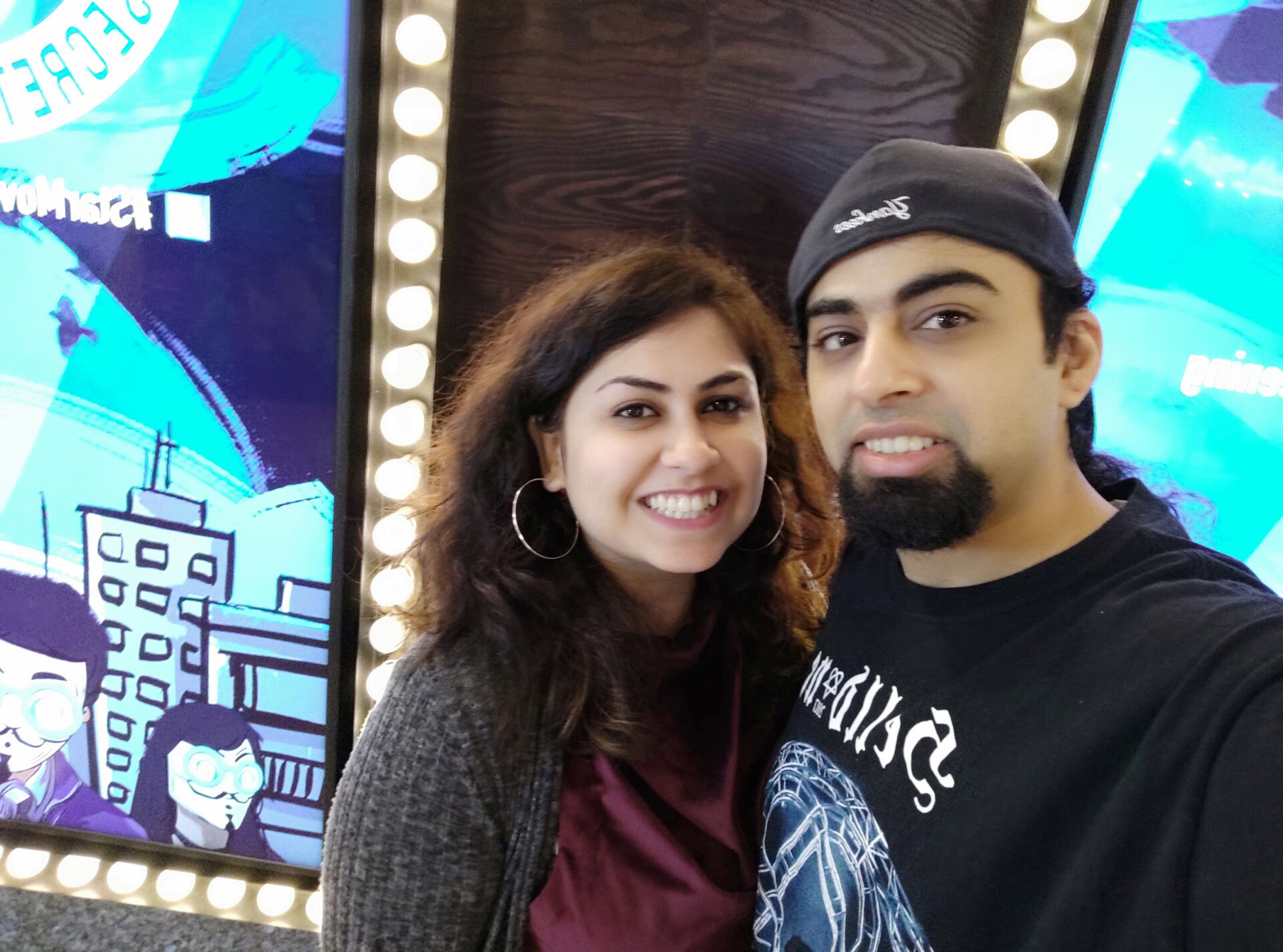
If I really had to point out a weak link in the Redmi Note 7 Pro’s camera, it would likely be the selfie camera. It falls apart in anything less than ideal light. In terms of video specs, the Redmi Note 7 Pro can shoot 4K video at 30fps and there is electronic stabilization available. It is also possible to record footage in the H.265 format which should help keep those file sizes in check.
Follow through here to view full resolution Redmi Note 7 Pro image samples.
Redmi Note 7 Pro specs
| Redmi Note 7 Pro | realme 3 Pro | |
|---|---|---|
Display | Redmi Note 7 Pro 6.3-inch IPS LCD 1080 x 2340 resolution 19.5:9 ~409 ppi | realme 3 Pro 6.3-inch full HD+ (2,340 x 1,080) LCD |
SoC | Redmi Note 7 Pro Qualcomm Snapdragon 675 (11 nm) | realme 3 Pro Qualcomm Snapdragon 710 |
GPU | Redmi Note 7 Pro Adreno 612 | realme 3 Pro Adreno 616 |
RAM | Redmi Note 7 Pro 4GB/6GB | realme 3 Pro 4GB/6GB |
Storage | Redmi Note 7 Pro 64/128GB Expandable with microSD card up to 256GB | realme 3 Pro 64GB/128GB Expandable |
Cameras | Redmi Note 7 Pro Front camera: 13MP, 1080p@30fps video recording Rear camera: 48MP, f/1.8 aperture, 1.6µm 4-in-1 super pixel, PDAF 5MP depth sensor f/2.4 aperture, 4K@30fps video recording, Dual-LED flash, EIS | realme 3 Pro Rear: Main: 16MP sensor with f/1.7 aperture Secondary: 5MP depth sensor Front: 25MP sensor with f/2.0 aperture |
Battery | Redmi Note 7 Pro 4,000mAh Quick Charge 4.0 support 18W USB-C | realme 3 Pro 4,045mAh VOOC 3.0 Charging |
Headphone port | Redmi Note 7 Pro Yes | realme 3 Pro Yes |
Software | Redmi Note 7 Pro Android 9.0 Pie with MIUI 10 | realme 3 Pro ColorOS 6 Android 9 |
Dimensions and weight | Redmi Note 7 Pro 159.2 x 75.2 x 8.1mm 186g | realme 3 Pro 156.8 x 74.2 x 8.3mm 172g |
Price | Redmi Note 7 Pro 13,999 rupees (4GB + 64GB) 16,999 rupees (6GB + 128GB) | realme 3 Pro 13,999 rupees (4GB + 64GB) 16,999 rupees (6GB + 128GB) |
Price and availability
The Redmi Note 7 Pro is available in two variants. The base model with 4GB of RAM and 64GB of storage is priced at 13,999 rupees (~$196) while the higher-end option with 6GB RAM with 64GB of storage is available for 16,999 rupees (~$243). Both phones go on sale starting March 13 and will available on mi.com and Flipkart in India. There’s no word on international availability as of now.
Verdict
Despite all its flaws, the Redmi Note 7 Pro is the best deal in smartphones right now. The hardware runs circles around anything else in the market. The camera is also one of the best in the entry-mid range segment. The cherry on the top has to be the price which at 13,999 rupees (~$200) for the 4GB/64GB version is a steal.
Half baked software pulls down an otherwise amazing smartphone.
Unfortunately, the phone is let down by Xiaomi’s software. There are performance glitches and signs of rushed production. Over my week with the Redmi Note 7 Pro, I definitely felt that Xiaomi should have spent a few more weeks optimizing the software.
While the company will likely patch and fix any performance issues, I am also concerned by the ad situation on the phone. Yes, this is a great smartphone but if your needs are more general purpose, Samsung’s new M series phones might serve you better. The Galaxy M20, in particular, has a pretty well-optimized software experience and great battery life too.
On the other hand, if you know your way around MIUI and can deal with the software’s eccentricities, the Redmi Note 7 Pro offers the best hardware in the segment, hands down.
That’s a wrap on our Redmi Note 7 Pro review! What do you think of Xiaomi’s new phone? Let us know in the comments.